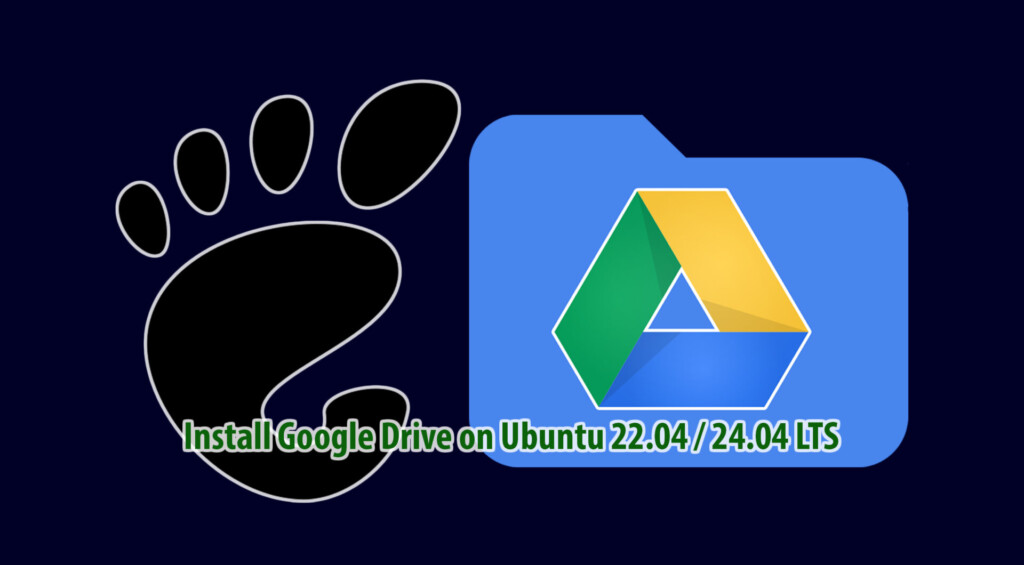Google Drive is one of the most popular cloud storage services, allowing you to store, share, and sync files online. If you’re using Ubuntu, the good news is that it natively supports Google Drive, especially with the GNOME desktop environment. But what if your system doesn’t have this feature, or you want an alternative solution? Let’s explore!

Google Drive on Ubuntu – Works Out of the Box!
If you’re running Ubuntu with the GNOME desktop, you can access Google Drive without installing anything extra.
How to Connect Google Drive on Ubuntu GNOME:
- Open Settings
- Go to Online Accounts
- Add your Google account and log in
- Grant access to Google Drive
- Open the File Manager (Nautilus) – Google Drive will appear in the sidebar

💡 Note: This method doesn’t sync all files offline. You can access files only when connected to the internet. If you need full synchronization, check out the tools below!
🔧 What If Ubuntu Doesn’t Have GNOME Online Accounts?
If, for some reason, your system doesn’t have GNOME Online Accounts, you can install it using:
sudo apt update && sudo apt install gnome-online-accountsThen, follow the steps above to add your Google account.
If you’re using another desktop environment (KDE, XFCE, LXQt…), GNOME Online Accounts may not work properly. In that case, check out the alternative tools below.
🔄 Comparing Google Drive Management Tools on Ubuntu
If you need more advanced features, here are two powerful tools for managing Google Drive on Ubuntu:
1️⃣ Rclone – Flexible and Powerful
Rclone is a command-line tool that allows you to connect and manage Google Drive like a local folder. It also supports OneDrive, Dropbox, Amazon S3, and more.
Install Rclone:
sudo apt install rclone -ySet up Google Drive:
rclone configFollow the on-screen instructions to link your Google account.
You can list files on Google Drive with:
rclone ls remote:Or mount Google Drive as a folder on your system:
rclone mount remote: ~/GoogleDrive --vfs-cache-mode full &🔹 Pros: Lightweight, supports multiple cloud services, doesn’t require a GUI.
🔸 Cons: Command-line only, requires some setup.
2️⃣ Insync – A Full-Featured but Paid Solution
If you want a graphical interface similar to Google Drive on Windows/macOS, Insync is a great option.
Install Insync:
- Download the .deb package from Insync’s website
- Install it using:
sudo dpkg -i insync*.deb- Launch Insync, sign in with your Google account, and select the folders you want to sync.
🔹 Pros: User-friendly interface, two-way synchronization, works well across Linux distros.
🔸 Cons: Paid software after a trial period.
⚠️ Common Issues & Fixes
If you run into problems while connecting Google Drive on Ubuntu, check these solutions:
🔴 Google option missing in Online Accounts?
👉 Check if GNOME Online Accounts is installed:
dpkg -l | grep gnome-online-accountsIf not, reinstall it:
sudo apt install gnome-online-accounts -y🔴 Google Drive not showing in File Manager?
👉 Restart GNOME Online Accounts with:
killall gnome-control-center && gnome-control-center online-accountsOr log out and log back in.
🔴 Want offline file syncing but it’s not working?
👉 GNOME Online Accounts only provides online access. To sync files, use Insync or Rclone.
If you just need quick access to Google Drive files without syncing, GNOME Online Accounts is the best option. For full synchronization, Rclone (free) or Insync (paid) are better choices.
Which tool are you using for Google Drive on Ubuntu? Have any tips? Share them below!